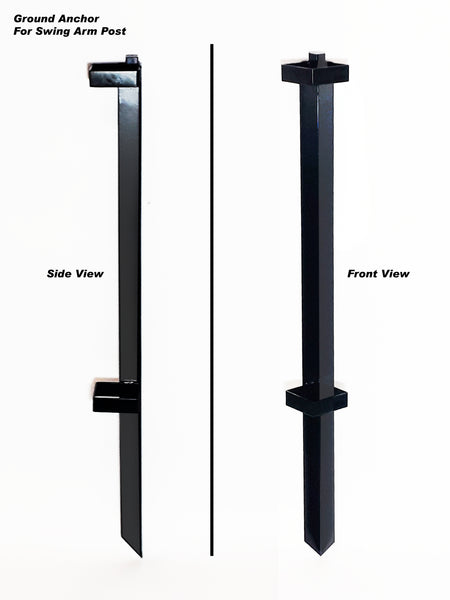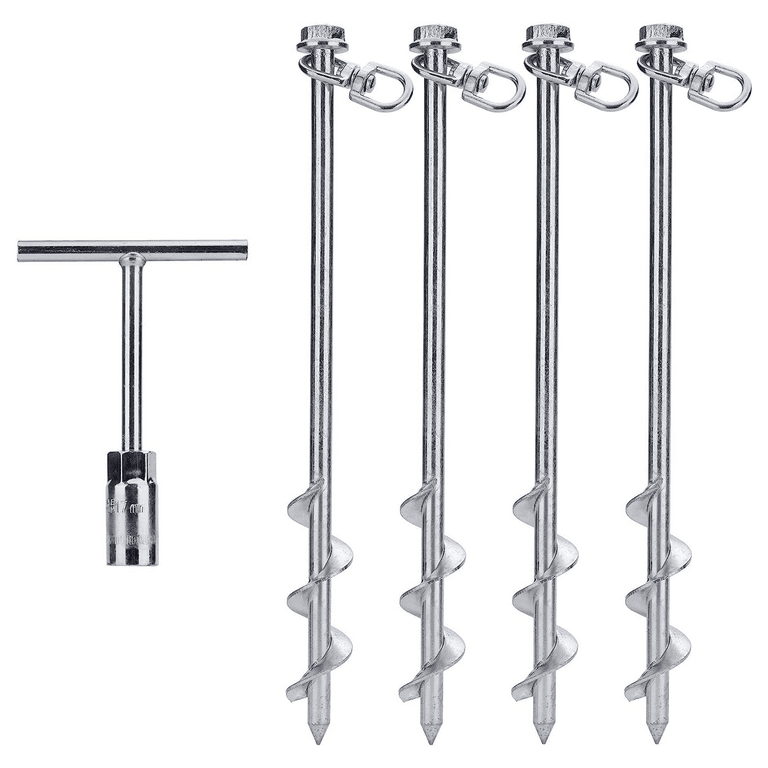Construction Specialists Give Advice on the Best Ground Anchor Solutions
Wiki Article
Explore the Different Kinds Of Ground Support for Your Following Job
When starting a building or landscape design job, recognizing the numerous kinds of ground anchors readily available is important to guaranteeing both security and resilience (Ground Anchor). From auger supports, which master varied dirt problems, to risk anchors developed for short-term installments, the options are various. Furthermore, concrete and screw anchors present special advantages in particular situations, while deadman anchors are customized for applications needing resistance to side forces. The option of an ideal support type can substantially affect the total success of your job, prompting further expedition into their respective advantages and applications.
Auger Anchors
Auger anchors are a preferred selection in different building and construction and landscaping tasks because of their special layout and reliable securing capacities. These anchors contain a helical screw-like shaft that is driven right into the ground, permitting a protected and stable hold. The spiral layout helps with easy installment and makes best use of resistance versus side pressures, making auger supports particularly reliable in applications such as fence, short-term structures, and disintegration control.The installation process of auger anchors is relatively straightforward. They can be manually or mechanically mounted, depending upon the size and called for depth. This flexibility enables for their usage in diverse soil conditions, from sandy to clayey surfaces. Auger supports can be quickly gotten rid of and reused, which adds to their cost-effectiveness and sustainability.
Among the considerable advantages of auger supports is their ability to distribute loads equally across the surrounding dirt, lowering the risk of soil disturbance and minimizing environmental impact. In addition, they are less at risk to heaving or loosening over time contrasted to conventional securing techniques. As a result, auger supports are a superb choice for jobs calling for resilient and reliable anchoring solutions.

Stake Anchors
When it pertains to securing structures in a selection of outdoor applications, risk anchors use a uncomplicated and reputable service. These anchors are normally constructed from durable products such as steel or aluminum, created to stand up to ecological tensions while providing optimal security. Their basic layout allows for fast installation, making them an ideal selection for long-term or short-term anchoring requirements.Stake anchors are specifically useful in securing camping tents, canopies, and other lightweight structures versus wind and climate. They function by being driven into the ground at an angle, creating a solid hold that resists pull-out pressures - Ground Anchor. The efficiency of risk anchors relies on a number of elements, including soil kind, dampness content, and the angle of installment
For included safety and security, several stake supports feature accessory factors for ropes or straps, permitting tension modifications as required. In applications such as landscape design or building and construction, they can successfully stabilize equipment or frameworks on unequal surface. Overall, stake anchors give a economical and functional remedy for protecting different exterior installments, making them a recommended selection for contractors and DIY enthusiasts alike.
Concrete Anchors
Concrete supports supply a durable remedy for securing frameworks to concrete surfaces, making certain stability and safety in various applications. These anchors are important for jobs varying from residential constructions to massive commercial setups. They come in various kinds, consisting of development anchors, adhesive anchors, and undercut anchors, each designed for details lots requirements and ecological problems.
When mounted,Growth supports published here depend on mechanical systems to grasp the concrete. They are excellent for medium to sturdy applications. Glue anchors make use of high-strength epoxy or material to bond the support to the concrete, offering remarkable load-bearing capacities, specifically in fractured concrete circumstances. Undercut supports create a distinct shape within the concrete, giving exceptional holding power, especially in applications where tensile lots prevail.
Selecting the suitable concrete support entails taking into consideration aspects such as the weight of the tons, the problem of the concrete, and ecological problems. Proper setup strategies are critical to make sure optimal efficiency and dependability. When executed properly, concrete anchors substantially boost the architectural stability of various jobs, making them essential in contemporary construction practices. Recognizing the certain requirements of your task will certainly help in selecting the appropriate type of concrete support for the job.
Screw Anchors

Screw supports are a flexible attaching remedy that can be effectively employed in a range of applications where typical concrete supports might not be sufficient. These supports contain a helical design that enables them to be conveniently driven right into the ground, making them ideal for usage in dirt and other substratums. Their one-of-a-kind framework supplies superb holding power and resistance to pull-out pressures, making them suitable for various projects, from landscape design to architectural support.
Among the key advantages of screw anchors is their convenience of installment. They require marginal tools and can typically be mounted without the need for excavation, which conserves both time and labor prices. Furthermore, screw supports can be eliminated and reused, offering a sustainable remedy for short-term applications.
Screw supports are specifically helpful in locations where dirt problems are challenging, such as loose or sandy soils. Their ability to be set up at differing midsts permits customization based on details project demands. In general, screw anchors supply a trustworthy and reliable securing approach, making them a superb choice for designers and service providers seeking efficient options for their tasks.
Deadman Anchors
Deadman supports serve as a robust remedy for maintaining frameworks in challenging conditions, especially where standard securing methods might drop brief. These anchors include large, hefty things hidden underground, which create resistance versus lateral forces. The style commonly entails a straight part, such as a block of concrete or a steel plate, hidden in the soil, to which cable televisions or straps are connected.The effectiveness of deadman supports hinges on their ability to disperse tons over a bigger area, reducing the danger of failing in unstable dirt conditions. They are particularly advantageous in applications such as keeping walls, short-lived structures, and slope stabilization, where soil movement can compromise the stability of the structure.
Installment of deadman anchors calls for mindful planning to guarantee they are put at the proper depth and alignment, maximizing their load-bearing capacity. While they might require more labor and material than lightweight supports, their reliability in unfavorable conditions makes them very useful for long-lasting jobs. Furthermore, deadman anchors are versatile and can be adapted to numerous applications, making them a go-to option for engineers dealing with one-of-a-kind difficulties in their tasks.
Conclusion
Auger anchors succeed in diverse dirt conditions, while stake supports match temporary applications. For link concrete surface areas, growth and adhesive anchors offer reputable alternatives, and screw anchors supply adaptability in challenging terrains.Additionally, concrete and screw supports existing one-of-a-kind benefits in particular scenarios, while deadman anchors are customized for applications calling for resistance to lateral forces - Ground Anchor.Auger anchors are a preferred option in various building and construction and landscape design jobs due to their one-of-a-kind design and efficient anchoring abilities. They come in different Read Full Report kinds, consisting of development anchors, glue supports, and undercut supports, each created for details lots needs and ecological problems
Sticky supports make use of high-strength epoxy or material to bond the anchor to the concrete, providing exceptional load-bearing capabilities, particularly in fractured concrete scenarios. On the whole, screw anchors supply a reliable and effective securing method, making them an outstanding choice for service providers and engineers seeking effective remedies for their jobs.
Report this wiki page